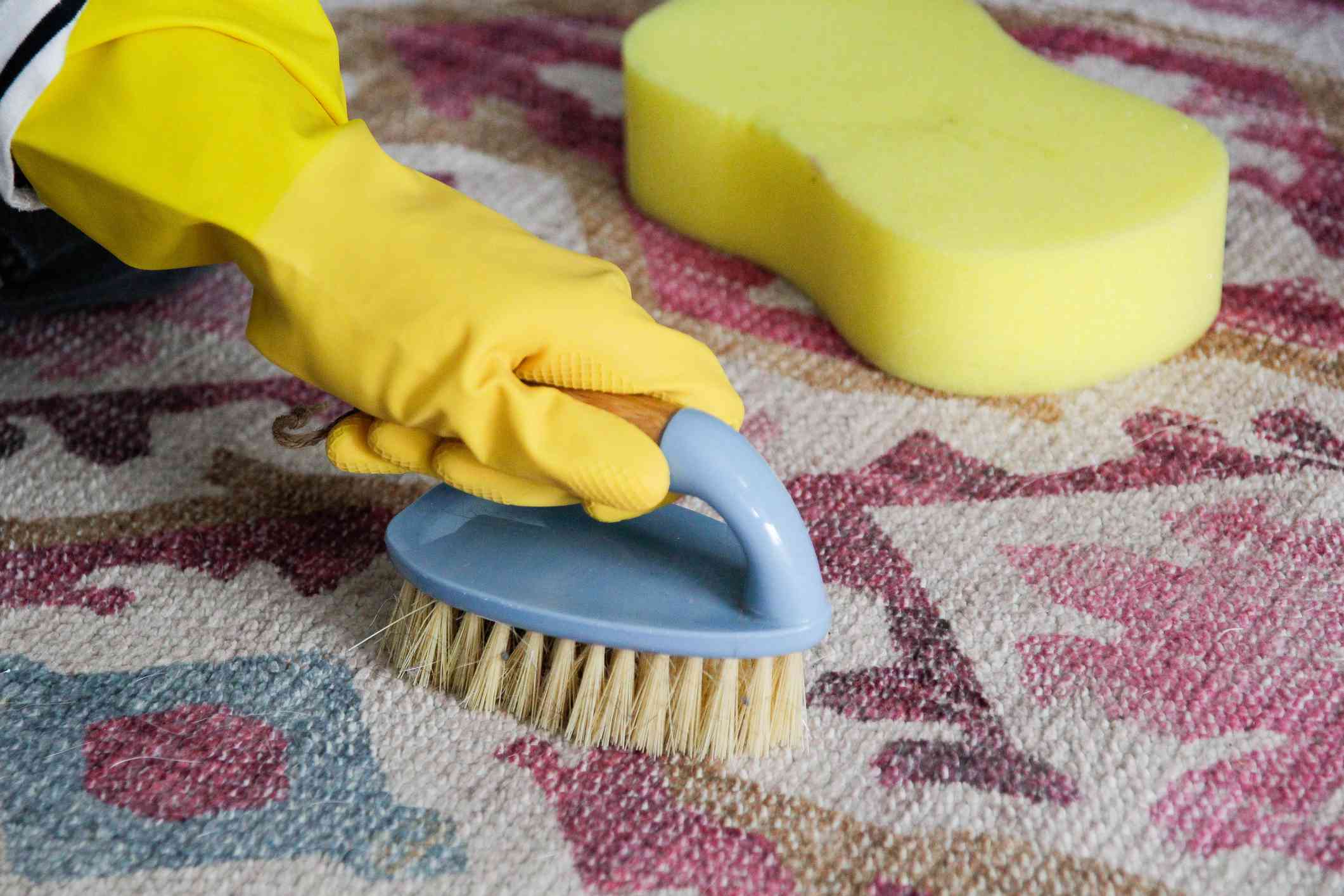- Damp carpet smells are typically caused by trapped moisture, mold, or bacteria.
- Use an enzyme-based or vinegar-water solution depending on whether mold is present or not.
- The key to preventing musty carpet odors is fixing the moisture issue at the source.
Not only is a damp carpet smell unpleasant, it can be a symptom of larger problems like mold, mildew, and/or bacteria. Whether caused by flooding, spills, or pet accidents, the good news is that in most cases, it is possible to remove the smell using a thorough cleaning process.
We asked carpet cleaning pros to share what causes damp carpet smells, how to effectively remove them, and what to do to prevent them from forming again.
Meet the Expert
- Ken Faherty is the founder of Be Green Carpet Cleaning.
- Cameron Welch is a commercial cleaning manager at Oxi Fresh Carpet Cleaning.
What Causes a Damp Carpet Smell
If no recent spills or accidents come to mind, your problem might be deeper than you think.
“Musty-smelling carpet odors are usually caused by trapped moisture, mold, or bacteria that are typically related to spills or improper ventilation,” says carpet cleaning pro Ken Faherty.
These are some potential causes of that damp smell:
- Water leaks
- Previous flooding
- Environmental humidity
- Residual moisture from improper cleaning
- Spills and pet accidents
- Broken pipes
- Failing seals
- Toilet overflows
- Plumbing leaks
Want more cleaning and organizing tips? Sign up for our free daily newsletter for the latest hacks, expert advice, and more!
How to Get Rid of a Damp Carpet Smell
To effectively eliminate damp carpet smells in your home, Faherty recommends that you follow these eight steps:
- Do a thorough inspection. Check the carpet for spills, accidents, and damp spots. Don’t forget to inspect corners and areas along the baseboards. Faherty recommends using a UV black light to illuminate mold, mildew, and other harmful contamination that could require additional treatment.
- Vacuum the carpet. Before you begin treating the carpet, make sure to thoroughly vacuum it from wall to wall.
- Pre-treat carpet with mold using an enzyme-based solution. If mold is present, find an enzyme-based mold treatment or disinfectant and follow the instructions on the label to pre-treat the carpet. Always conduct a spot test in a hidden spot such as a closet corner first.
- Pre-treat carpet with no mold using a vinegar-water solution. If no visible mold is present, pre-treating the carpet with 1:1 distilled white vinegar and water solution to eradicate the musty odor. Spray it on the carpet surface and let sit for up to 15 minutes.
- Push the solution in. Using a cleaning brush, push the solution down to the backing without vigorous scrubbing.
- Remove the pre-treatment solution. Using a clean cloth or towel, remove as much of the enzyme-based treatment or diluted vinegar from the carpet. Leaving excess moisture can only make the smell worse.
- Use a fast-drying cleaning process. For lingering issues, Faherty recommends a fast-drying spray-on dry-cleaning foam. If you use a carpet cleaning machine, make sure to follow the instructions carefully and remove as much moisture as possible.
- Allow for good air circulation. Once the carpet has been cleaned, circulate air by turning on the air conditioning or attic fan, opening windows if you live in a dry climate, or plugging in a dehumidifier if you are in a humid environment.
- Check that the carpet is fully dry. Make sure to inspect the recently cleaned carpet and check that it has dried properly. If there are still wet areas after eight hours have passed, contact a professional.
Warning
“If mold is suspected, consider hiring a professional, or in extreme cases, you might even need to replace the entire carpet, as mold can easily spread down to the subfloor if not treated properly,” Faherty says.
Tips for Preventing Damp Carpet Smells
To avoid a damp carpet smell in your home, pro carpet cleaner Cameron Welch recommends implementing the following preventative measures:
- Stay on top of regular home maintenance for appliances and fixtures that use water, such as a washing machine, dishwasher, and sinks.
- “Dry out your carpets as thoroughly as possible anytime they’re exposed to moisture and if high humidity or moisture levels are an ongoing problem in your house, consider running a dehumidifier on a long-term basis,” Welch says.
- Clean and replace HVAC filters regularly to ensure maximum ventilation and air flow.
- In the case of a spilled drink of a pet accident, Welch recommends cleaning and drying the spot immediately and if a damp smell remains, use an enzymatic carpet cleaning solution to spot-treat the area.
- Have carpets professionally cleaned at least once a year, or more frequently for areas that have high foot traffic or if you have pets in the home.
- Vacuum carpets frequently and thoroughly—at least once a week.
- Carpets made from natural fibers such as wool tend to hold onto a lot of moisture, so if you have the option, Welch recommends opting for a carpet made of durable synthetic fibers that might absorb less water.











